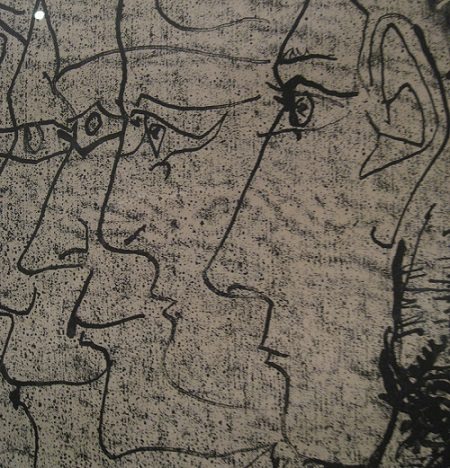
An old opportunity…but new to so many
So many NGOs still don’t apply personal face-to-face solicitation, in the North American sense of that phrase. In North America, personal face-to-face solicitation describes the strategy used when a fundraiser and/or volunteer meets with a prospect to personally request a gift. Elsewhere, the term “face-to-face” usually means street fundraising. An oft-used alternate term is “major gifts” and “major gift solicitation.”
In the fundraising/philanthropy fields, “major gift” typically refers to gift size/donor wealth. See research from various sources, e.g., Paul Schervish, Bank of America Study of High Net Worth Philanthropy, Deutsche Bank Wealth with Responsibility, etc. And now there’s the new term, “HNWI”: High Net Worth Individuals.
To me, the terminology of “major gift” and “HNWI” are exclusive in the bad sense. As I tell my clients, Bill and Melinda’s definition of a major gift is different than what’s a major gift to me. Also, many organizations will never connect with HNWIs.
Furthermore, no other solicitation strategy includes the audience target, e.g., major donor, in the title. Solicitation strategies include direct mail, telephone, fundraising events, street fundraising, and proposals/grant applications. But there’s no target audience stipulated.
Nonetheless, for effectiveness and efficiency, an organization typically defines a benchmark for ROI when assigning prospects for personal face-to-face solicitation. But always remember, the donor defines what is a major gift for him or herself. And, the prospect or donor—of any amount—might actually say, “I expect a personal face-to-face meeting and solicitation if I’m going to give you $XX or XX€ or whatever.”
Personal face-to-face solicitation is a natural evolution in good fundraising. This approach works well with individuals as well as some corporations, for both operating/core program support and many capital projects.
And yet, personally meeting up and asking for a gift is a new concept for so many nonprofits, no matter their budget size.
It’s way past time to seize the opportunity for personal face-to-face solicitation. So why are so many organizations—their staff and board members—reluctant?
Why? Here are some observations from my own experience
- Anxiety and fear of the unknown
- Uncomfortable with prior experiences in fundraising, either as a donor or solicitor
- Insufficient information about the organization to comfortably speak with others
- Uncomfortable talking about money and can’t imagine asking for the specific gift
- Inadequate information about what this strategy actually means and how it’s done
- Uncomfortable making presentations and don’t realize this is a conversation
- Insufficient information about prospects and their interests
- Perception that fundraising is staff work
- Belief that “no one” wants to be solicited personally, face-to-face
- Perceived lack of time to apply this approach—we’re volunteers and we’re busy
Research about the personal face-to-face approach, as well as my own experience:
- Some research
- Major gifts are estimated to produce 80 percent of income. (Pray, 1981), Fundraising Principles and Practice (pg. 352)
- “A person may give ten times the amount they give through the mail if they’re asked face to face.” (Reuther, 1998), Fundraising Principles and Practice (pg. 361)
- Research shows that volunteer-led solicitation costs less: 10–20¢ per $1 raised. (Information from Jim Greenfield’s Fund-Raising Cost Effectiveness, circa 2011.)
- Success rate of face-to-face is 70–80 percent, much higher than any other strategy. Excellence in Fundraising in Canada. (pg. 171)
- Fundraising best practice affirms the value of personal face-to-face solicitation. Practitioners and their work, e.g., Fredricks’ The Ask, Sprinkel Grace’s Beyond Fundraising and High Impact Philanthropy, and so forth.
- My own observations
- Often raises more money from current donors giving via other strategies
- Good way to engage sophisticated prospects who haven’t yet been asked.
- Great relationship-building strategy, being face-to-face with someone. (See Dr. Albert Mehrabian’s communications research: between 70 and 90 percent of communication is non-verbal, etc.)
Prototyping and co-creation
I believe that all organizations should engage in personal face-to-face solicitation…even the smallest and newest organizations. That comes from my own experience (and the results) as a chief development officer, board member, and consultant. And the research noted in #1 above confirms my experience.
Overcoming objections to this strategy is easier than organizations and their leaders think. So I expect organizations to try. And I help them try.
On the one hand, seizing this opportunity is easy. This is neither a board decision nor a fund development committee decision. The chief development officer—supported by the CEO—can decide and implement. That works well in a mega-institution where board member participation isn’t important. (Although I believe that even mega-institutions should engage board members in philanthropy, voluntary action for the common good.)
But for my clients, I want understanding and ownership. I expect learning and change. While I don’t expect every board member to participate in personal face-to-face solicitation, I do expect his or her endorsement of the concept and its value. And the same with staff.
My approach is to identify the key audiences. I identify their respective roles. I design the learning > change > understanding > ownership process. And I prepare the various customers for various ranges of participation in the new opportunity of personal face-to-face solicitation.
Multiple audiences engage in this new opportunity of personal face-to-face solicitation. The audiences have different roles. The process helps them understand the important distinctions in their roles, and the limitations of their particular roles.
|
Customer |
Their role—and limitations Sign up for our free newslettersSubscribe to NPQ's newsletters to have our top stories delivered directly to your inbox. By signing up, you agree to our privacy policy and terms of use, and to receive messages from NPQ and our partners. |
|
CEO |
Decides to seize the opportunity…or not. Hopefully follows direction of chief development officer. |
|
Chief development officer (CDO) [Sometimes this is the CEO and there is no separate position.] |
Expert in fundraising—or developing self. Designs, manages, and implements this new opportunity. |
|
Development staff |
Input. Supports decisions and direction of CDO. |
|
Other staff of the organization |
Helps create donor-centered organizations and a culture of philanthropy and fundraising. |
|
Board of Directors (the group) |
Input. Endorse. Learn. But no decisions to make. |
|
Board’s Fund Development Committee |
Input. Endorse. Learn. But no decisions to make. |
|
Individual board members |
Input. Endorse. Learn. But no decisions to make. Some serve as solo solicitors or team members. |
|
Current donors and prospects for this solicitation strategy |
Participant in the solicitation experience. Agrees/refuses the meet-up. Responds to the request. |
Group process promotes shared learning. Shared learning builds understanding and ownership. So your organization has to be good at group process. Or, at the very least, your CEO and chief development officer have to be good at group process. And it sure helps if your board chair is, too.
You use group process and teamwork to engage multiple voices, reduce fear, and build understanding and ownership.
You must be committed to learning and change. See my blogs and newsletter about group process, resources for learning, and change. Check out NPQ’s various articles. Check out articles in the Harvard Business Review.












